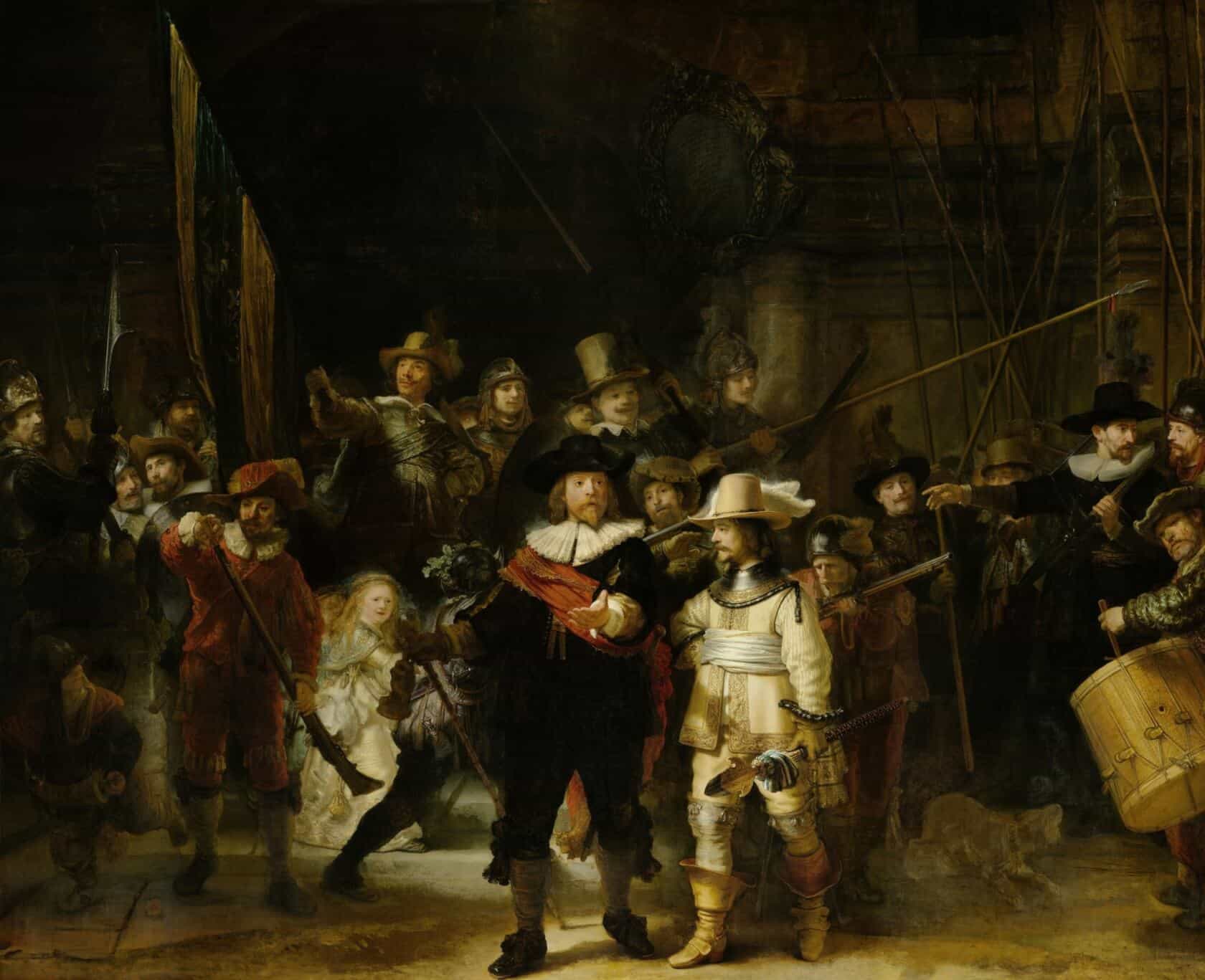There are a few time periods and places in history that have nurtured better and more famous artists than the Golden Age in the Netherlands. Today we’re going to talk about Rembrandt van Rijn, the biggest craftsman of them all.
While to many of us today the 17th century sounds almost as far away as medieval times, to the people of the Netherlands this period is known as the Golden Age. Not only was this a highly prosperous time for the country as a whole, with trade, science, and the military being among the most acclaimed in Europe, but it was also a prolific phase for the arts.
It’s precisely the Golden Age that brought us some of art history’s most prominent works and artists. From Van Eyck to Breughel, all the way to Rubens and Frans Hals, the Dutch have had such a huge influence when it comes to art that the world wouldn’t be what it is today were it not for them. Rembrandt van Rijn, the famous author of The Night Watch, certainly holds his place at the top of this list.
Master of the arts, talented painter, printmaker, and draughtsman, Rembrandt van Rijn, or simply Rembrandt, is one of the most important artists known to modern man. With a wide range of styles and subject matters — from portraits and self-portraits to landscapes and historical and biblical scenes — this Dutch artist born in 1606 remains one of the biggest contributors to the Baroque movement.
His life and works, however, are as intriguing and captivating as they are scandalous and bohemian. So, get ready for a deep dive into Rembrandt’s biography and oeuvre. It’s most certainly an interesting one.
The Early Years
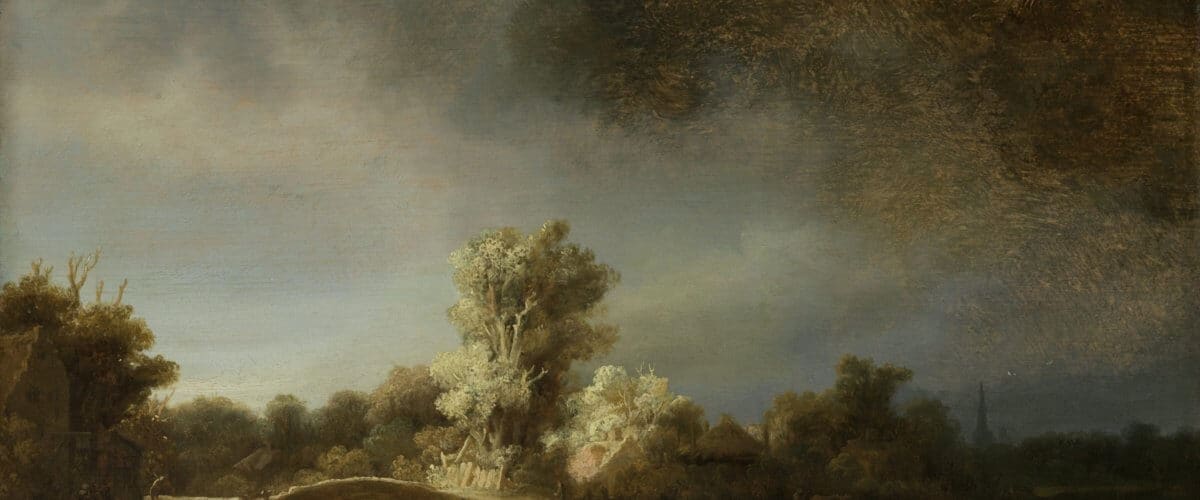
Raised as the ninth child in a well-to-do family, with his father a miller and his mother a baker’s daughter, Rembrandt was brought up in a rather religious manner. His early childhood connections to Christianity left a mark on his works when it comes to central themes and remain a common thread in a myriad of his paintings.
After a couple of apprenticeships during his years at the University of Leiden, he soon started his own workshop and, a bit later, his own studio, which grew to accept a rising number of new students. The year 1629 was an important one for Rembrandt, having been discovered by statesman Constantijn Huygens who soon after started ordering commissions for the court of The Hague. This resulted in many important orders, some of which went to the Dutch prince Frederik Hendrik himself.
Rembrandt in Amsterdam
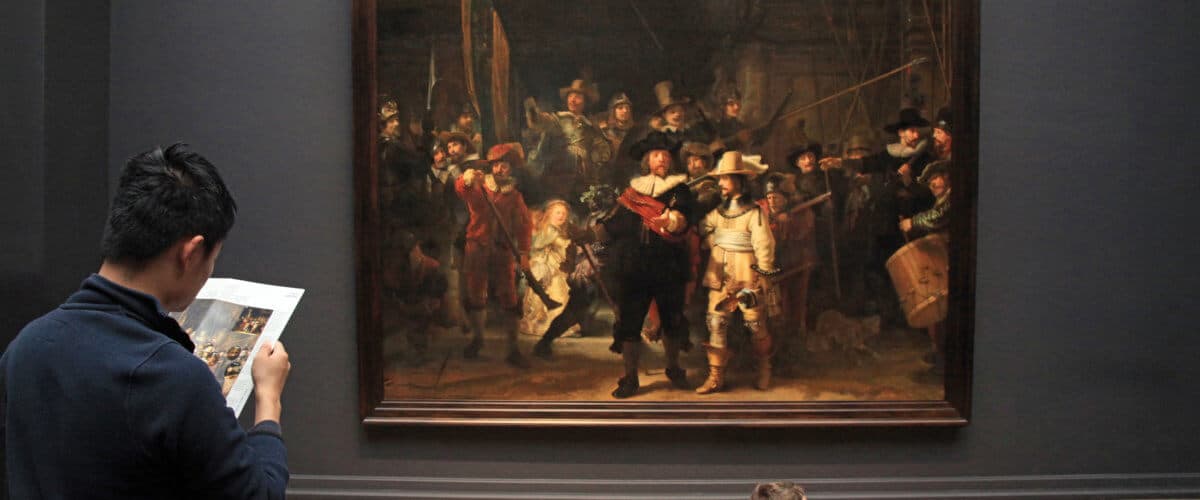
Rembrandt’s prominence started growing and his reputation as a master craftsman was a notable one. So notable, in fact, that he moved to the capital city of Amsterdam in 1631, where he began his career as a professional portraitist. Three years later, he entered into his first marriage with the beautiful Saskia, his art dealer’s cousin and, eventually, his muse.
His success, however, turned out to be a double-edged sword. While his income was extraordinary for the time period, it seems as if his spending went hand in hand with his salary, leaving him more often than not with very little money. Yet, these difficulties were only the least of his troubles. Having lost three out of his four children at an early age, with only one of them reaching adulthood, Rembrandt’s wife Saskia died in 1642 of tuberculosis, soon after the birth of their youngest boy Titus.
Scandals, Affairs, Financial Troubles, and Death
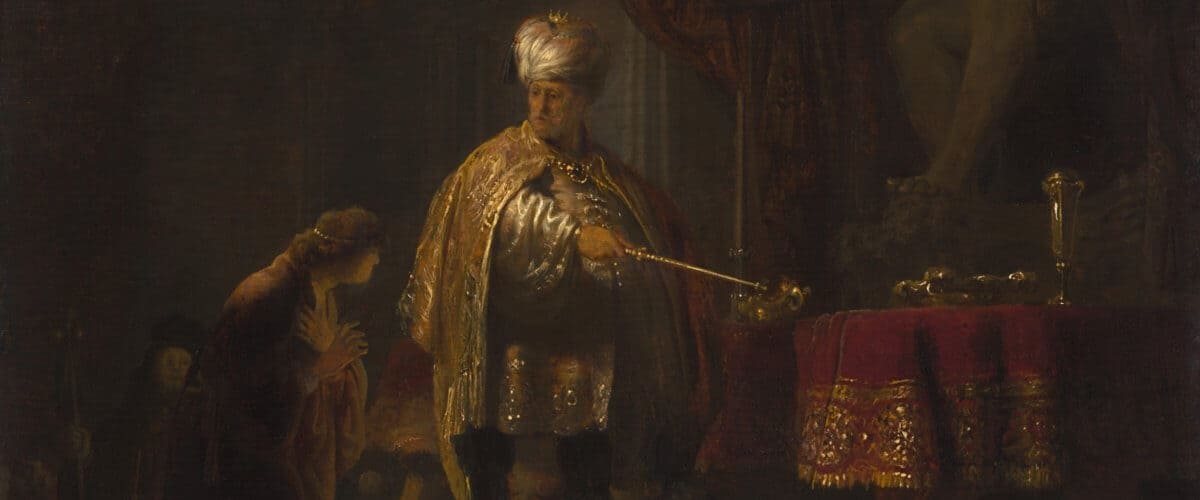
During Saskia’s illness, Geertje Dricx was hired as Titus’ caretaker but, as fate often has it, the artist and the nurse developed some kind of relationship. After a huge scandal between the two of them broke out, with Geertje suing for a so-called ‘breach of promise’ (a euphemism for seduction under the false promise of marriage), Rembrandt quickly moved on to his second wife Hendricjke Stoffels, his former maid.
Rembrandt’s relationships with the women in his life mark an important part of his biography. His tumultuous affairs, often with much younger women, influenced his art and reputation in many ways. Today, we can see Saskia, Geertje and Hendrickje portrayed in a large number of his works, with certain pieces (like Woman bathing in a Stream) having been regarded as ‘promiscuous’ at the time.
His financial troubles only grew more severe over the years, with bankruptcy being just a step away. This is why in 1656 the artist sold most of his paintings and a large collection of antiquities and, later on, in 1658, his house and his painting-press. By this time, he was also thrown out of Amsterdam’s Painters’ Guild, due to a new rule which claimed that no one in Rembrandt’s circumstances should be able to trade art. The painter created a so-called ‘dummy corporation’ with his son and second wife in order to get around this.
While he continued to take commissions during the next few years, he died in 1669. He was supposedly buried as a rich man, yet his grave was unmarked and his remains were destroyed after two decades, which was customary in that time period.
Style, Substance, and Most Famous Works
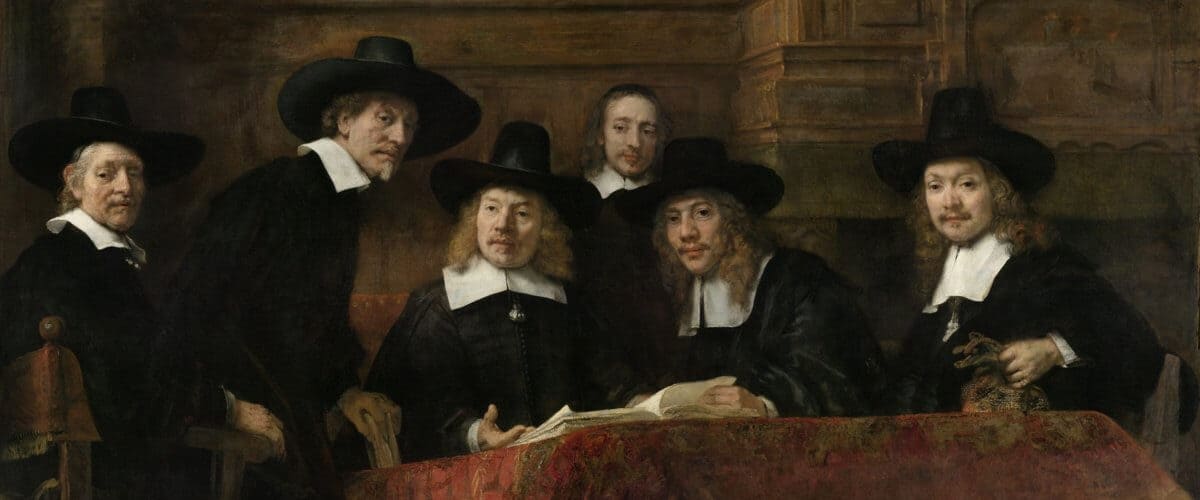
Rembrandt’s works are best known for their magnificent portrayal of natural movement, emotions, and a rich array of motifs. His Baroque style is best represented by the use of the chiaroscuro technique, done with light and shadow. The subjects he painted were rather lively and dynamic compared to the stiff and formal portraits of his contemporaries, which brought more novelty to this branch of the arts. While his style changed a couple of times throughout the years, his trademark is still visible in each and every one of his paintings, which is another sign of the greatness of his talent.
During his career, he produced a number of over 600 paintings, 400 etchings, and some 2000 different drawings. Among those are about 90 of his self-portraits, which allow us to create a very clear picture of the way this artist looked and aged throughout his life.
He is even present in his biblical works, appearing in paintings such as The Raising of the Cross, Joseph Telling His Dreams, and The Stoning of Saint Stephen, as a character in the crowd.
His early works are characterized by a myriad of biblical scenes, seeking to emulate Rubens’ rich and lively style. He was inspired by both the New and the Old Testament, which can be seen in paintings such as Judas Returns the Thirty Pieces of Silver, Bathsheba with the letter from King David, The Jewish Bride, and The Return of the Prodigal Son.
He was also heavily inspired by mythology, with The Abduction of Europa, Philemon and Baucis, and Diana Bathing with her Nymphs being only some of the most famous ones. Influences from the Orient are prominent in clothing design and can also be seen in his etchings and miniatures.
To this day, The Night Watch, also known as The Shooting Company of Frans Banning Cocq and Willem van Ruytenburch, is his best-known work, created in 1642 as a commission for the newly built Musketeer’s Meeting Hall in Amsterdam. This group portrait brought many innovations to the genre, with Rembrandt having to find solutions for a variety of different compositional and narrative problems.
It portrays 34 people, with Rembrandt himself as the drummer, and shows movement and liveliness which wasn’t common in group portraits before his time. With colossal dimensions (3,6m x 4,3m), this crown jewel of his oeuvre can today be seen at the famous Rijksmuseum in Amsterdam.
The heritage Rembrandt has left is too phenomenal to fully comprehend. His innovations were copied even throughout his life, yet none of his contemporaries or his followers ever rose to his level of fame and craftsmanship. Today, his works are present in some of the world’s most famous museums, achieving some of the biggest price points when it comes to private auctions.
Despite his odd and tumultuous lifestyle, and even despite his financial troubles, Rembrandt outlived himself, leaving us a legacy of incredible artistry and awe-inspiring masterworks. So, next time you find yourself in front of his paintings, know that you’re standing in front of some of the best art objects that humanity has to offer.
Photo: Everett Collection/Shutterstock
You might also like:
Support us!
All your donations will be used to pay the magazine’s journalists and to support the ongoing costs of maintaining the site.
Share this post
Interested in co-operating with us?
We are open to co-operation from writers and businesses alike. You can reach us on our email at [email protected]/[email protected] and we will get back to you as quick as we can.
